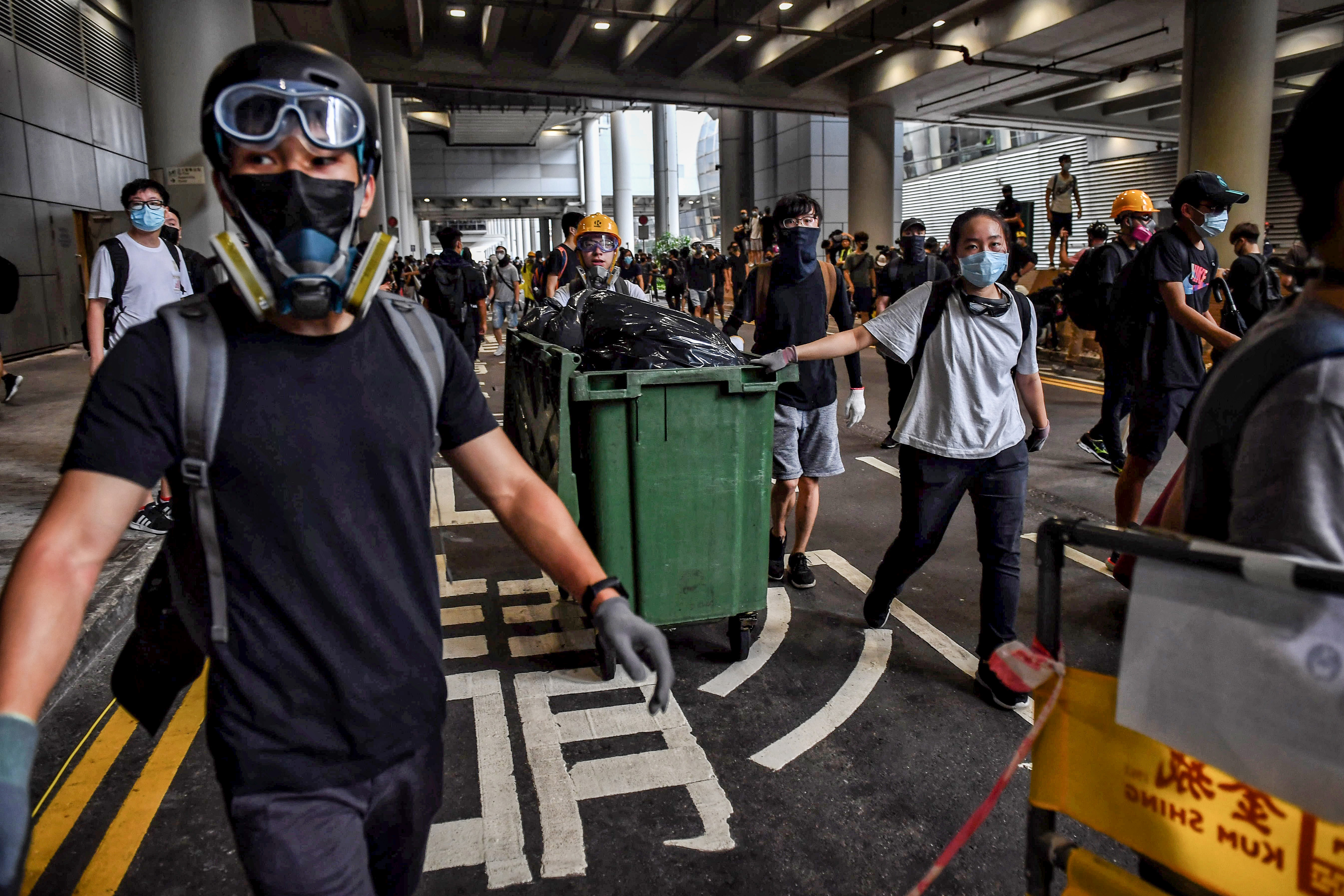Culprits were nabbed within 24 hrs on Nangloi firing case: Delhi Police
Talking to media persons, Tewari emphasized that the Delhi Police acted swiftly after the incident, arresting two individuals within 24 hours.
The wound must heal if further conjecture on whether Hong Kong will witness a repetition of China’s crackdown in Tiananmen Square ( June 1989) is to cease.

Protesters build barricades at Hong Kong International Airport on September 1, 2019. Hundreds of Hong Kong pro-democracy activists attempted to block transport routes to the city's airport on September 1, as the financial hub began cleaning up after another night of serious violence marked by fires, tears gas and police beatings. (Lillian SUWANRUMPHA / AFP)
It would be rather too simplistic to iterate that Hong Kong has reached a grim pass. The clouds above the island nation are still more dense on the anniversary of the 2014 Umbrella movement. China’s People’s Liberation Army has reinforced its presence in the stillness of the night and the prominent pro-democracy activists have been arrested on the fourth anniversary of the upheaval. After two and a half months, the confrontation between the authorities and protesters appears further than ever from a peaceful resolution. As many as one in four inhabitants have taken to the streets and this week ~ two and a half months after the movement began ~ it became the longest-running political protest since Britain’s handover of Hong Kong to China in 1997.
But the longer the demonstrations go on, the harder it has become to see a way out. This month, following the occupation of the airport, both police and activists had softened their tactics. The resulting period of relative peace, which included a march by 1.7 million people, afforded the authorities an opportunity to look for a way out of the impasse. Far from it, as it turned out. The violence has escalated, exemplified by a policeman firing a “live round” during clashes for the first time and demonstrators on the streets lobbing Molotov cocktails.
A ban on what was expected to be another huge march on Saturday has raised tensions further despite hopes that a compromise could still be found. There are suggestions that the authorities might invoke the Emergency Regulations Ordinance, a colonial-era law giving the chief executive sweeping powers of censorship, suppression of publications and communications, arrests, deportations and property seizures. Arguably, the government could be testing the waters, before announcing specific actions, such as introducing internet censorship. The spectre of a still grimmer outcome looms over the tiny nation. The chief cause of surprise must be that the legislation on deportation to China ~ which ignited the conflagration ~ has been kept in abeyance by the chief executive, Carrie Lam.
Advertisement
The wound must heal if further conjecture on whether Hong Kong will witness a repetition of China’s crackdown in Tiananmen Square ( June 1989) is to cease. The durability of this movement owes at least as much to its opponents as to its supporters. Despite the unfounded accusations of foreign meddling, this crisis was arguably masterminded by China. The authorities may have hoped that a campaign of attrition would gradually wear out protesters.
But Beijing’s threats, Carrie Lam’s initial intransigence and police brutality have so far fired up those already involved and brought more into the fold. Ms Lam says it is her responsibility to continue to hold the fort… which is disintegrating around her. She has made no concessions since announcing the bill as “dead”, though even pro-establishment figures have urged her to withdraw it. But can she act independently of President
Advertisement